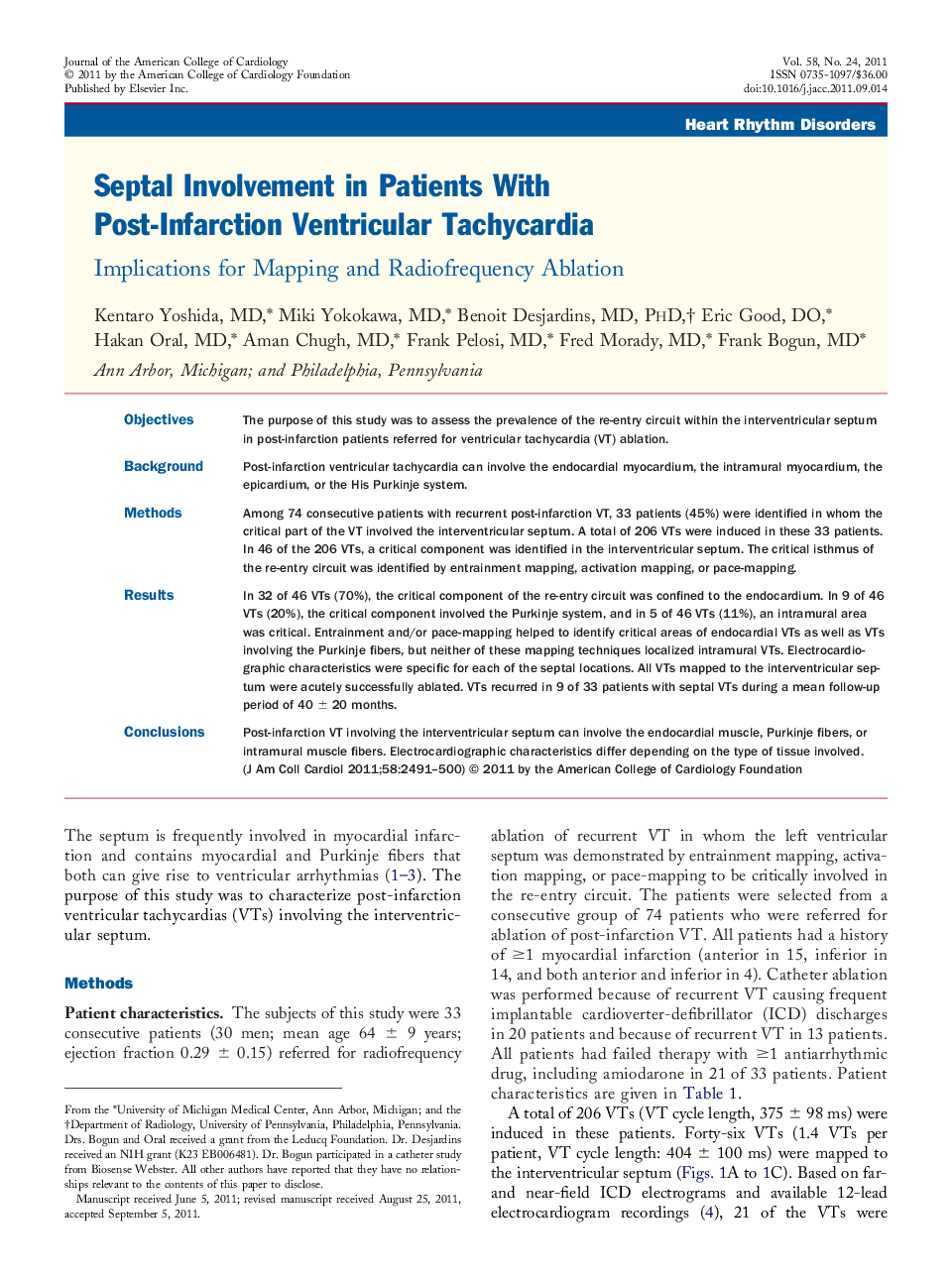| Article ID | Journal | Published Year | Pages | File Type |
|---|---|---|---|---|
| 2947522 | Journal of the American College of Cardiology | 2011 | 10 Pages |
ObjectivesThe purpose of this study was to assess the prevalence of the re-entry circuit within the interventricular septum in post-infarction patients referred for ventricular tachycardia (VT) ablation.BackgroundPost-infarction ventricular tachycardia can involve the endocardial myocardium, the intramural myocardium, the epicardium, or the His Purkinje system.MethodsAmong 74 consecutive patients with recurrent post-infarction VT, 33 patients (45%) were identified in whom the critical part of the VT involved the interventricular septum. A total of 206 VTs were induced in these 33 patients. In 46 of the 206 VTs, a critical component was identified in the interventricular septum. The critical isthmus of the re-entry circuit was identified by entrainment mapping, activation mapping, or pace-mapping.ResultsIn 32 of 46 VTs (70%), the critical component of the re-entry circuit was confined to the endocardium. In 9 of 46 VTs (20%), the critical component involved the Purkinje system, and in 5 of 46 VTs (11%), an intramural area was critical. Entrainment and/or pace-mapping helped to identify critical areas of endocardial VTs as well as VTs involving the Purkinje fibers, but neither of these mapping techniques localized intramural VTs. Electrocardiographic characteristics were specific for each of the septal locations. All VTs mapped to the interventricular septum were acutely successfully ablated. VTs recurred in 9 of 33 patients with septal VTs during a mean follow-up period of 40 ± 20 months.ConclusionsPost-infarction VT involving the interventricular septum can involve the endocardial muscle, Purkinje fibers, or intramural muscle fibers. Electrocardiographic characteristics differ depending on the type of tissue involved.
